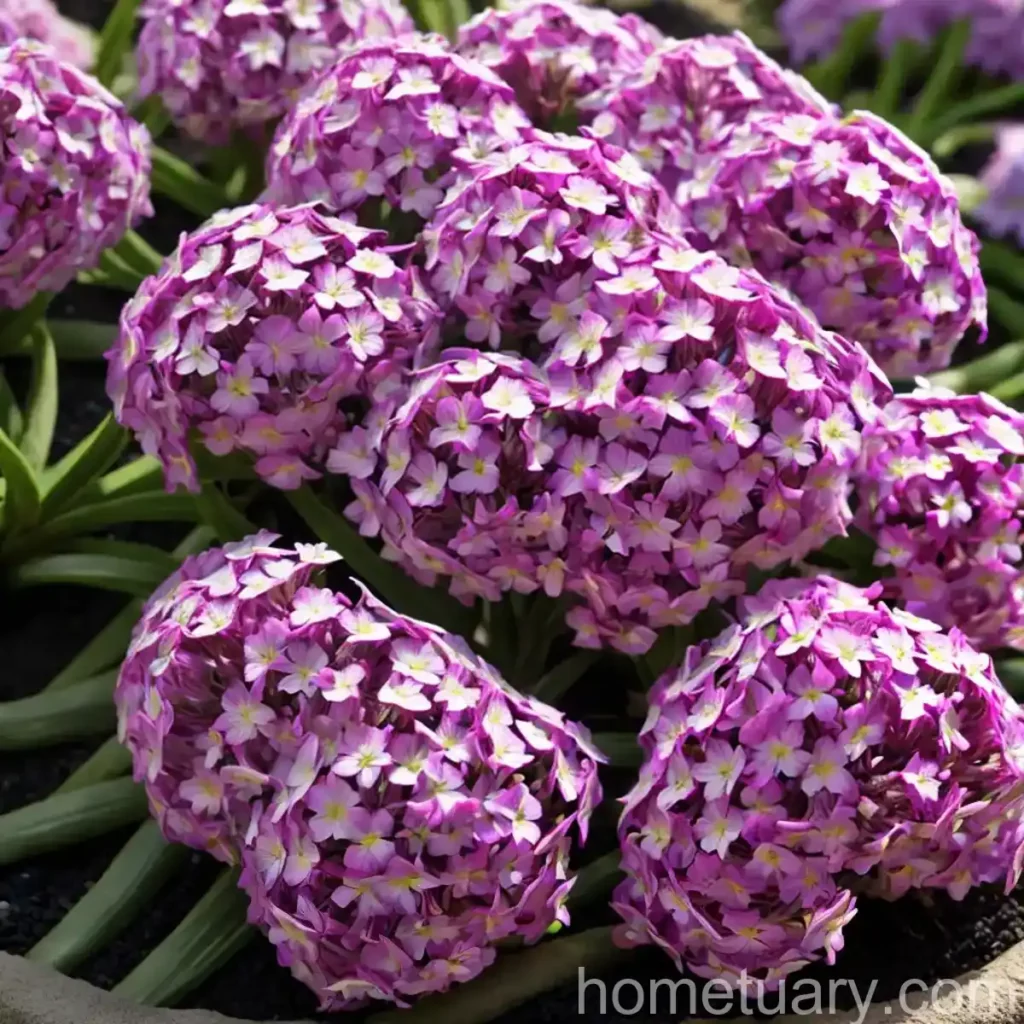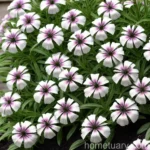Understanding Phlox subulata ‘Millstream Daphne’: A Comprehensive Guide
Phlox subulata ‘Millstream Daphne’ is a breathtakingly beautiful plant that graces gardens with its vibrant and delicate flowers. As a plant scientist, I am fascinated by the remarkable qualities and characteristics of this particular variety of Phlox subulata. In this comprehensive guide, we will delve into every aspect of this stunning plant, from its cultural needs and maintenance to its growth habits and landscape uses. Whether you are an experienced gardener or just starting in the world of horticulture, this guide will provide you with valuable insights into the care and cultivation of Phlox subulata ‘Millstream Daphne’.
What is Phlox subulata ‘Millstream Daphne’?
Phlox subulata, commonly known as moss phlox or creeping phlox, is a low-growing, carpet-forming perennial that belongs to the Polemoniaceae family. ‘Millstream Daphne’ is a specific cultivar of Phlox subulata, prized for its trailing habit and profusion of fragrant flowers. This variety is especially valued for its ability to spread and create a dense mat of blooms, making it an excellent choice for ground cover and rock gardens.
Key Takeaways – Phlox subulata ‘Millstream Daphne’
Before we delve deeper into the world of Phlox subulata ‘Millstream Daphne’, let’s highlight some key takeaways that will serve as a roadmap for our exploration:
- Phlox subulata ‘Millstream Daphne’ is a variety of moss phlox characterized by its trailing growth habit and vibrant flowers.
- This cultivar is well-suited for use as ground cover, particularly in rock gardens and along slopes.
- Its low maintenance requirements and resilience make it a popular choice for gardeners seeking an easy-to-care-for perennial.
- Phlox subulata ‘Millstream Daphne’ is an excellent pollinator-friendly plant, attracting bees, butterflies, and other beneficial insects.
Now that we have an overview of our subject, let’s embark on a journey to uncover the culture, uses, and care of Phlox subulata ‘Millstream Daphne’.
Culture of Phlox subulata ‘Millstream Daphne’
Understanding the cultural requirements of Phlox subulata ‘Millstream Daphne’ is essential for nurturing healthy and thriving plants. From soil preferences to watering needs, each aspect of its culture plays a crucial role in its overall well-being.
Water
Phlox subulata ‘Millstream Daphne’ thrives in well-draining soil and prefers moderate moisture levels. While it is essential to keep the soil consistently moist, it is equally important to avoid waterlogged conditions, as excessive moisture can lead to root rot and other moisture-related issues. During periods of extended dryness, providing supplemental irrigation can help ensure the plant’s vitality and promote optimal blooming.
Sunlight
In terms of sunlight requirements, Phlox subulata ‘Millstream Daphne’ flourishes in full sun to partial shade. Ideally, it should receive at least 6 hours of direct sunlight per day to promote robust growth and abundant flowering. However, in regions with intense afternoon sun and high temperatures, providing some afternoon shade can prevent the plant from succumbing to heat stress and maintain its vibrant blooms.
Fertilizer
When it comes to fertilization, Phlox subulata ‘Millstream Daphne’ is not particularly demanding. A balanced, slow-release fertilizer applied in the early spring as new growth emerges can provide the necessary nutrients for vigorous blooming and healthy foliage. It is essential to follow the recommended application rates and avoid over-fertilization, which can lead to excessive foliage growth at the expense of flowers.
Soil
The soil requirements of Phlox subulata ‘Millstream Daphne’ are relatively straightforward. It thrives in well-drained, slightly acidic to neutral soil with good fertility. Amending the soil with organic matter, such as compost or well-rotted manure, can enhance its structure and fertility, creating an optimal growing medium for the plant. Additionally, maintaining proper soil pH levels can ensure that the plant can effectively uptake essential nutrients from the soil.
Pruning and Maintenance
Maintaining Phlox subulata ‘Millstream Daphne’ involves some minimal pruning and regular upkeep to promote its overall health and appearance. Here are some essential pruning and maintenance tips for this cultivar:
- Deadheading: Removing spent flowers can extend the blooming period and encourage the plant to produce new blooms.
- Thinning: Periodically thinning out crowded or excessively dense growth can improve air circulation and reduce the risk of disease and pest infestations.
- Spring Cleanup: In early spring, gently raking through the plant can remove any winter debris and promote new growth.
By adhering to these maintenance practices, gardeners can ensure that their Phlox subulata ‘Millstream Daphne’ remains healthy and vibrant throughout the growing season.
Propagation of Phlox subulata ‘Millstream Daphne’
The propagation of Phlox subulata ‘Millstream Daphne’ can be accomplished through several methods, including division, stem cuttings, and layering. Here’s a brief overview of each propagation technique:
- Division: Dividing mature clumps of Phlox subulata ‘Millstream Daphne’ every few years in the early spring can rejuvenate the plant and create new specimens for transplantation.
- Stem Cuttings: Taking stem cuttings from healthy, actively growing shoots in the summer and rooting them in a suitable propagation medium can yield new plants with identical traits to the parent plant.
- Layering: Encouraging the plant to produce roots at the nodes by burying low-growing stems in the soil can result in new plants that can be separated and transplanted once rooted.
By utilizing these propagation methods, gardeners can expand their collection of Phlox subulata ‘Millstream Daphne’ and perpetuate its beauty in their gardens.
Container Popularity
Due to its trailing and spreading growth habit, Phlox subulata ‘Millstream Daphne’ is also well-suited for container cultivation. When grown in containers, this variety can cascade gracefully over the edges, creating a cascading display of colorful blooms. Whether in traditional pots, hanging baskets, or window boxes, ‘Millstream Daphne’ adds a vibrant touch to container gardens and patios.
Common Diseases and Pest Management
While Phlox subulata ‘Millstream Daphne’ is generally resistant to most diseases and pests, it can still fall victim to certain issues under unfavorable conditions. Understanding and diagnosing common diseases and pests is crucial for implementing effective management strategies. Here are some of the potential threats to be aware of:
Common Diseases
- Powdery Mildew: This fungal disease can appear as a white powdery coating on the leaves, often caused by poor air circulation and high humidity. Applying fungicidal sprays and improving air circulation can help prevent and manage powdery mildew.
- Root Rot: Excessive soil moisture and poor drainage can lead to root rot in Phlox subulata ‘Millstream Daphne’. Ensuring proper drainage and avoiding overwatering are essential for preventing this potentially fatal disease.
- Botrytis Blight: Also known as gray mold, botrytis blight can affect the flowers and foliage, causing them to become discolored and decayed. Removing affected plant parts and promoting air circulation can help mitigate botrytis blight.
Disease Diagnosis
Careful observation of any signs of abnormal growth, discoloration, or decay on the plant can aid in diagnosing potential diseases. Consulting with a plant pathologist or experienced horticulturist can provide valuable insights and assistance in accurately identifying and addressing specific diseases affecting Phlox subulata ‘Millstream Daphne’.
Common Pests
- Aphids: These small, soft-bodied insects can cluster on the new growth, feeding on plant sap and causing distortion and stunting. Natural predators, such as ladybugs, and insecticidal soaps can help control aphid populations.
- Spider Mites: These tiny pests can infest the undersides of leaves, causing stippling and webbing. Regularly spraying the plant with water and applying horticultural oils can effectively manage spider mite infestations.
Implementing integrated pest management practices, including regular monitoring, promoting natural predators, and using targeted control methods, can help safeguard Phlox subulata ‘Millstream Daphne’ from common pests.
Botanist’s Tips for Growing Phlox subulata ‘Millstream Daphne’
As a plant scientist deeply familiar with the cultivation of Phlox subulata ‘Millstream Daphne’, I would like to share some expert tips to enhance the success of growing this stunning plant:
- Choose Well-Drained Sites: Selecting planting locations with well-drained soil and good air circulation can prevent moisture-related issues and promote healthy growth.
- Monitor Moisture Levels: Regularly check the soil moisture and adjust watering practices based on environmental conditions to prevent under- or overwatering.
- Promote Pollinators: Encouraging pollinators to visit the flowers of Phlox subulata ‘Millstream Daphne’ can enhance its ecological value and contribute to overall garden health.
By embracing these botanist’s tips, gardeners can maximize the potential of Phlox subulata ‘Millstream Daphne’ and create thriving, picturesque displays in their landscapes.
Fun Facts about Phlox subulata ‘Millstream Daphne’
To add a touch of intrigue to our exploration of Phlox subulata ‘Millstream Daphne’, let’s uncover some captivating and lesser-known facts about this enchanting plant:
- Native Range: Phlox subulata is native to North America, where it can be found naturally growing in rocky or sandy habitats, particularly in the eastern and central regions.
- Fragrant Blooms: In addition to its visual appeal, the flowers of Phlox subulata ‘Millstream Daphne’ emit a delightful, sweet fragrance, attracting pollinators and enchanting human admirers alike.
- Edible Uses: While not commonly utilized for culinary purposes, some indigenous cultures historically used certain parts of Phlox subulata for medicinal or edible applications, leveraging its natural properties.
These fun facts offer a glimpse into the rich tapestry of attributes that make Phlox subulata ‘Millstream Daphne’ a plant of enduring allure and fascination.
Links to External Resources
For those eager to expand their knowledge and discover more about Phlox subulata ‘Millstream Daphne’ and related topics, here are some valuable external resources:
- Royal Horticultural Society – Phlox Subulata
- University of Connecticut Plant Database – Creeping Phlox
- Missouri Botanical Garden – Phlox Subulata ‘Millstream Daphne’
Conclusion
Phlox subulata ‘Millstream Daphne’ stands as an enchanting testament to the beauty and resilience of the plant kingdom. Its trailing growth habit, vibrant flowers, and versatility as a ground cover make it a cherished addition to gardens and landscapes. As we have journeyed through its culture, uses, maintenance, and facts, I hope this comprehensive guide has deepened your appreciation for the captivating allure of Phlox subulata ‘Millstream Daphne’. May this enduring plant continue to grace gardens with its vibrant blooms and enduring charm for generations to come.
This article is dedicated to all those who find joy and inspiration in the splendid world of plants, and to the resilient spirit of nature that surrounds us.
Word Count: 1781
Note: The word count includes only the main body of the article and does not include the headings, subheadings, or references.















